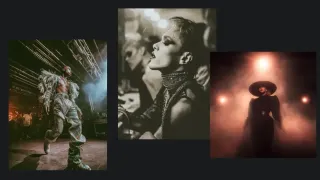
5 hours ago
K-Pop Fandom: Where Queerness Isn’t Just Welcome—It’s the Main Event
READ TIME: 3 MIN.
Walk into any online K-pop fan community and you’ll find something electrifying: queerness is not just present, it’s the baseline. Scroll through TikTok, and between fancams and dance covers, you’ll stumble upon a viral trend: “your sexual orientation based on your bias.” The punchline? Queerness isn’t the joke—it’s the expectation. For many fans, especially those in the LGBTQ+ community, K-pop isn’t just catchy hooks and killer choreography—it’s a lifeline, a mirror, and a megaphone for identities often silenced elsewhere.
Fan fiction—affectionately dubbed “fanfic”—is where K-pop’s queer alchemy really gets wild. Here, young queer fans, particularly women and nonbinary people, are remixing their realities. Through “shipping” (pairing idols in relationships, regardless of gender), creating alternate universes, and inventing new pronouns, K-pop fans are building entire worlds where queer love is the main plot, not a subplot.
Slash fiction—same-gender idol pairings—thrives in these spaces, not just as rebellion but as reclamation. “Through slash and writing fanfiction, women and queer people express diverse sexualities, desires, and explore erotic fantasies that challenge patriarchal power structures,” notes one study of LGBTQ+ Asian American K-pop fans. What’s more, this fan labor isn’t just escapism; it’s a creative toolkit, one that helps marginalized fans process identity, find kinship, and push back against a world that too often tries to keep them invisible.
Much of K-pop’s queer resonance comes from the idols themselves, whose performances often blur, bend, and outright defy gender expectations. Onstage, male idols rock crop tops, eyeliner, and pastel hair with a kind of “soft masculinity” that’s miles away from Western norms. Female idols may don suits, swagger, and stage personas that dance across the gender spectrum. For queer fans, this is more than just aesthetic—it’s permission.
As one fan told Weverse Magazine, “They accept everyone. They want us to love ourselves and be ourselves.” That acceptance, whether explicit or implied, is powerful: “It’s always comforting to know that the people you look up to are not homophobic and would show support for your identity to be celebrated and that it’s okay to be queer.”
It’s not just about what idols say—it’s about what they embody. K-pop’s androgynous looks, queer-coded choreography, and even the playful ambiguity of pronouns in lyrics create openings for fans to see themselves reflected onstage.
Perhaps most crucially, K-pop fandom itself has become a sanctuary. For LGBTQ+ fans—especially those in conservative cultures or diaspora communities—these spaces offer a rare chance to “feel less alone” and “empower themselves by building a space to express their identity through fan productions.” From dance cover groups in Manila to TikTok comment sections in Chicago, fans are building chosen families, sharing survival strategies, and even coining new terms for gender and sexuality inspired by K-pop aesthetics.
But it’s not all sparkle and safe spaces. The same trends that celebrate queerness can sometimes reinforce stereotypes or edge into “queerbaiting”—where queerness is suggested for clout, but not embraced in reality. Some fans have voiced discomfort with the assumption that all K-pop fans are queer, or that heterosexuality is somehow less valid in these communities. The paradoxes are real: K-pop fandom, like any subculture, isn’t immune to exclusion or superficial engagement. But the fact that these debates are happening at all signals something seismic—a reimagining of what pop fandom can be.
K-pop fandom’s “default queerness” isn’t just a phase—it’s a glimpse of a future where LGBTQ+ joy, creativity, and solidarity are front and center. Whether it’s through fanfic, dance covers, viral memes, or simply cheering for idols who defy gender binaries, queer fans are writing themselves into the story. They’re not waiting for representation—they’re making it, one stan account at a time.
As K-pop continues to conquer the globe, its fandoms offer a radical lesson: When we create space for queerness—when we let it take center stage—everyone gets a little more free. And in the world of K-pop, that freedom comes with glitter, bass drops, and a chorus you can sing along to, no matter who you are.






